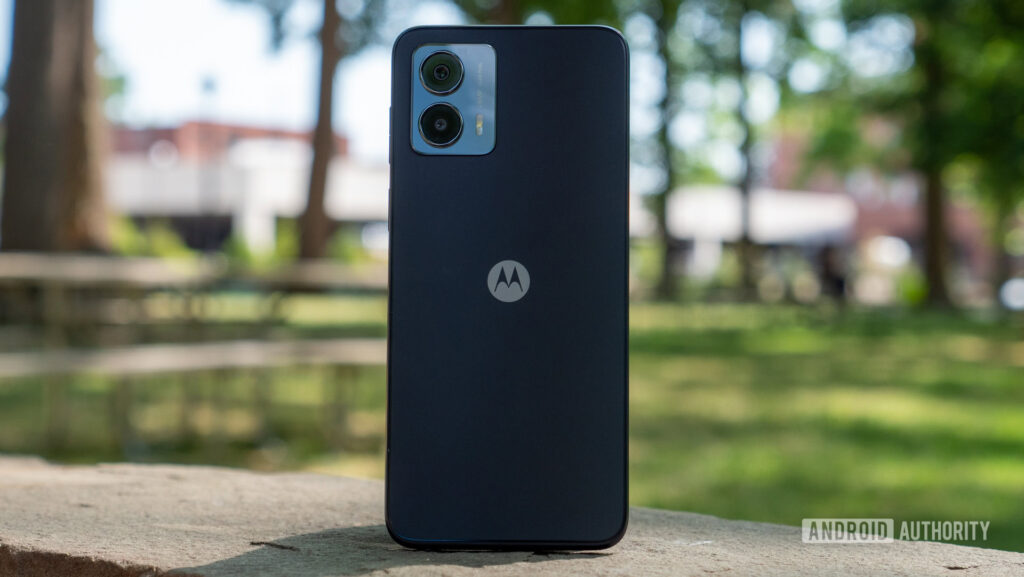
What is Motorola? Exploring the Legacy and Future of a Tech Pioneer
When someone asks, “What is Motorola?”, a simple answer doesn’t suffice. Motorola is more than just a name; it’s a legacy, a pioneer, and a symbol of innovation in the telecommunications and electronics industries. From its groundbreaking contributions to two-way radios to its significant role in the development of mobile phones, Motorola has consistently pushed the boundaries of technology. Today, under the ownership of Lenovo, Motorola continues to evolve, focusing on smartphones and related technologies. This article delves into the rich history of Motorola, its key innovations, and its current standing in the tech landscape.
A Brief History of Motorola
The story of Motorola begins in 1928 with the Galvin Manufacturing Corporation, founded by brothers Paul and Joseph Galvin in Chicago, Illinois. Initially, the company focused on battery eliminators, devices that allowed battery-powered radios to run on household electricity. However, the Galvins quickly recognized the potential of car radios, and in 1930, they introduced the Motorola radio, which gave the company its new name in 1947.
During World War II, Motorola played a crucial role in developing communication equipment for the U.S. military, including the handie-talkie SCR-536 radio, which became a vital tool for soldiers on the battlefield. This experience solidified Motorola’s expertise in radio technology and set the stage for future innovations.
Key Innovations and Breakthroughs
Motorola’s contributions to the tech world are vast and significant. Here are some of the company’s most notable innovations:
- Two-Way Radios: Motorola pioneered the development of two-way radios, revolutionizing communication for law enforcement, emergency services, and various industries.
- Semiconductors: Motorola was a leading manufacturer of semiconductors, essential components in electronic devices. The company’s semiconductor division, now known as ON Semiconductor, continues to be a major player in the industry.
- Microprocessors: Motorola developed the 68000 series of microprocessors, which powered many early personal computers, including the Apple Macintosh and the Commodore Amiga.
- Mobile Phones: Perhaps Motorola’s most iconic contribution is the development of the first portable cellular phone, the DynaTAC 8000x, in 1983. This groundbreaking device paved the way for the mobile phone revolution.
- Pagers: Before the widespread adoption of mobile phones, Motorola was a dominant force in the pager market, providing a convenient way for people to stay connected.
The Rise and Fall (and Rise?) of Motorola’s Mobile Division
The late 20th century and early 21st century saw Motorola’s mobile phone division reach unprecedented heights. The company produced iconic phones like the RAZR, which became a global fashion statement. However, Motorola struggled to keep pace with the rapidly changing smartphone market dominated by Apple and Samsung. The company’s mobile division experienced a decline, eventually leading to its acquisition by Google in 2012.
Google’s ownership of Motorola was relatively short-lived. In 2014, Google sold Motorola Mobility to Lenovo, a Chinese technology company. Under Lenovo’s ownership, Motorola has focused on producing affordable and innovative smartphones, aiming to regain its position in the competitive mobile market. [See also: Motorola’s Smartphone Strategy]
Motorola Today: A Focus on Smartphones
Today, Motorola is primarily known for its smartphones. The company offers a range of devices catering to different price points and user needs. Motorola’s current smartphone lineup includes the Moto G series, known for its value and affordability; the Moto E series, offering entry-level options; and the Motorola Edge series, featuring premium designs and advanced features. Motorola also continues to innovate with foldable phones, such as the Razr, paying homage to its iconic past while embracing cutting-edge technology.
Motorola has carved out a niche for itself by offering smartphones with clean software, reliable performance, and competitive pricing. The company’s commitment to providing a bloatware-free Android experience has resonated with many users. [See also: Android Smartphone Comparison]
The Future of Motorola
Looking ahead, Motorola faces both challenges and opportunities. The smartphone market is highly competitive, with numerous players vying for market share. To succeed, Motorola must continue to innovate, differentiate its products, and build a strong brand identity. The company’s focus on affordability and clean software could be a key differentiator in a market saturated with expensive and feature-laden devices.
Furthermore, Motorola can leverage its history of innovation to explore new technologies and product categories. The company has the potential to expand into areas such as IoT (Internet of Things), wearables, and other emerging technologies. By embracing innovation and adapting to changing market trends, Motorola can secure its place as a leading technology company for years to come. Motorola is banking on it’s heritage to propel it into the future.
Motorola’s Enduring Legacy
In conclusion, Motorola is a company with a rich history and a legacy of innovation. From its early days as a manufacturer of car radios to its groundbreaking contributions to mobile phone technology, Motorola has consistently pushed the boundaries of what’s possible. While the company has faced challenges in recent years, it remains a significant player in the tech industry, particularly in the smartphone market. As Motorola continues to evolve under Lenovo’s ownership, it will be interesting to see how the company builds on its legacy and shapes the future of technology. The name Motorola still carries weight in the industry. [See also: The Evolution of Mobile Technology]
The story of Motorola is a testament to the power of innovation, resilience, and the enduring human desire to connect and communicate. Whether it’s through two-way radios, mobile phones, or future technologies, Motorola has played a vital role in shaping the way we live and interact with the world. Understanding “what is Motorola” requires acknowledging its profound impact on technology and communication.
